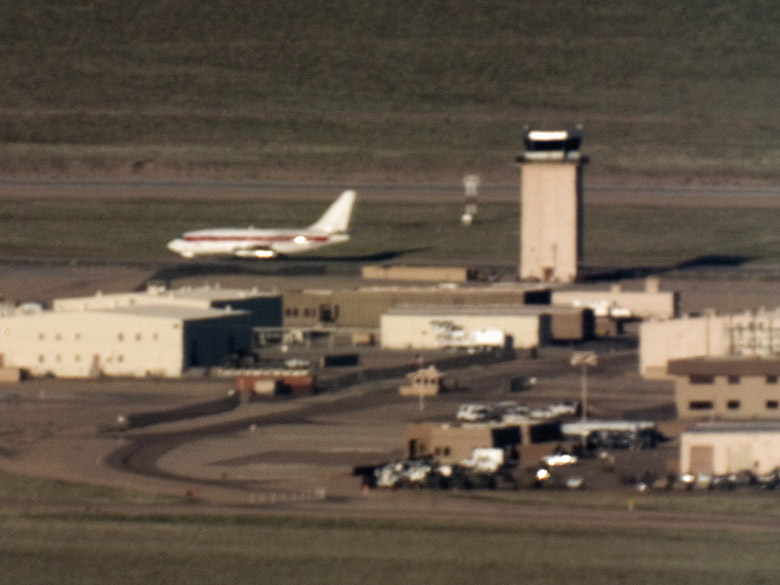| Tonopah Test Range (TNX) Located in the northern region of the Nellis Complex, the Tonopah Test Range is a major hub for classified military programs. The origins of the base go back to the 1950s, when Sandia Labs built a facility for experimenting with test shapes for nuclear weapons.
In the late 1970s, the Tonopah Test Range underwent a massive overhaul that transformed the base into a major center of “black world” activity. The late 1970s and early 1980s saw two programs expand dramatically. One was the 4477th Test & Evaluation Squadron, also known as the “Red Eagles.” The Red Eagles were charged with flying a squadron of Soviet-built MiGs and Sukhois (acquired from nations such as Egypt and Israel) in order to develop tactics that might be used against these foreign aircraft. In 1979 and 1980, the Red Eagles funded initial construction of the modern Air Force Base at the Tonopah Test Range, adding hangars, taxiways, support facilities, and other structures. In 1981, further construction at the Tonopah Test Range came via the newly-created 4450th Tactical Group whose mission was to fly a new “black” aircraft. This aircraft was the F-117A Nighthawk, the “stealth fighter.”
The emergence and growth of these two programs transformed the TTR into a full-fledged Air Force Base, albeit one dedicated to classified operations. The 4450th Tactical Group eventually commanded two squadrons of stealth fighters, which operated out of Tonopah in almost absolute secrecy, flying missions only at night until 1989, when the Air Force revealed the existence of the program. A few months after the Air Force published the first images of the stealth fighter, the planes flew from Tonopah to spearhead the December 1989 invasion of Panama. The following year, a group of stealth fighters deployed to King Khaled Air Base in Saudi Arabia to lead the first Gulf War. Among stealth fighter crews, King Khaled Air Base became known as “Tonopah East.” Upon their return to the United States, the stealth fighters were transferred to Holloman Air Force Base in New Mexico, where they remain to this day.
Although the Janet flights file daily flight plans to the Tonopah Test Range, the nature of the work at the base remains obscure. | 